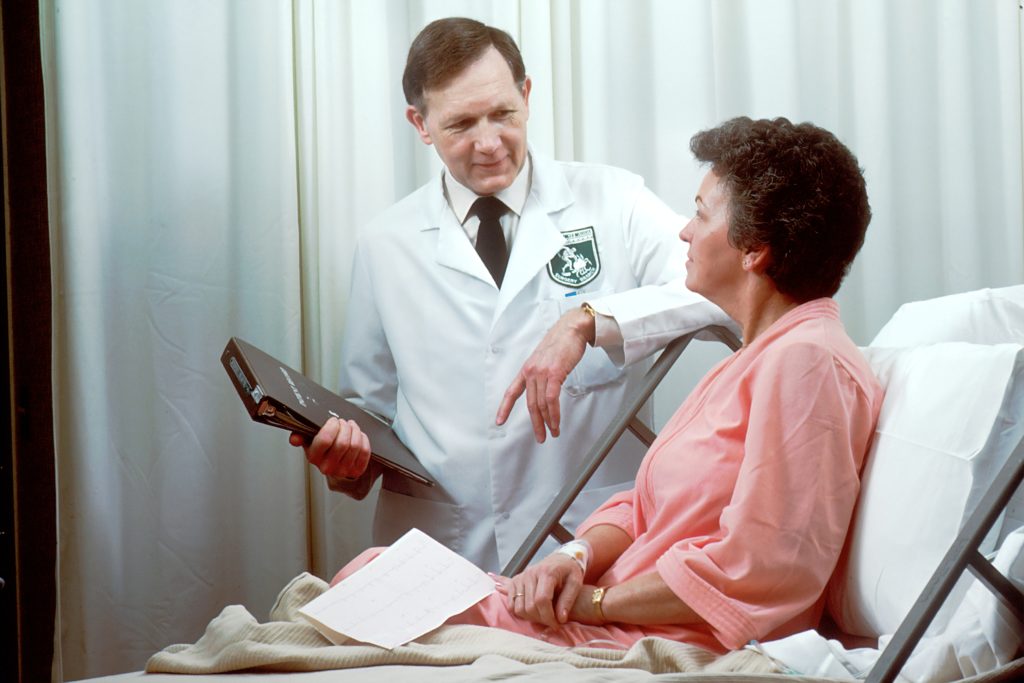National Patient Recognition Week recently took place and serves as an annual reminder that patients are the single most important aspect in healthcare. While there have been many rapid advancements across technology and treatment solutions for improved care delivery, healthcare professionals are still human, and errors are sometimes inevitable. The COVID-19 pandemic has put an immense strain on the system across the board, making it even more critical for patients to take a front seat in their own care journey.
Medical errors are among the leading causes of death worldwide. According to the Patient Safety Movement Foundation, “Globally, preventable complications following medical care contribute to more deaths than people dying from HIV, malaria, and tuberculosis combined.” In fact, every six minutes a person dies due to an issue related to patient safety. However, only 37% of individuals surveyed could correctly define the term “medical error.” Until this phrase is widely known and patients are empowered to take ownership of their medical treatment–we won’t make progress. I entered the profession, like many others, to help individuals recover and regain their health and a major element of that is ensuring that patients themselves understand the problem and learn how they can evade experiencing preventative medical errors.
Medical Errors: Understanding What They Are and Why They Happen
There are numerous ways in which patients can be harmed or medical errors can occur. Healthcare workers are at the forefront. Despite meeting all the qualifications for the profession, patient safety is often not included in the curriculum. This means that while clinicians come in with good intentions, organizational system failures often result in medical errors. The way hospitals function, manage and report medical mistakes is not streamlined and can, in turn, make it difficult to identify and address root causes.
Complications during the patient’s hospital stay are also a major problem. For example, hospital-contracted infections are a common yet extremely preventable issue. In fact, the CDC found that central-line associated bloodstream infections (CLABSI) in U.S. hospitals increased 28% in the second quarter of 2020, compared to the same time period in 2019 as a result of the stress the pandemic put on the healthcare system. These are usually caused by superbugs that are very difficult to treat because they are resistant to most antibiotics. Another very frequent error is deep venous thrombosis, which presents in hospitalized patients who are unable to move to cause their blood to remain static, coagulate, and often leads to fatality. The likelihood that someone you know has died of this while being treated in a hospital is high and unfortunately, could have likely been avoided with proper awareness and stringent protocols in place.
Medical errors do not only impact adults, they affect every age and gender. One common example is premature infants who require oxygen to live. If the vital gas administered to them is not properly controlled or monitored, the consequences can be life-altering. We know that everything in excess can have negative impacts and the abuse of oxygen is no exception. If a baby is given too much oxygen, they become at risk of developing retinopathy of prematurity, a condition that causes impaired vision.
How We Can Prevent Medical Errors
The good news is that most patient safety problems can be prevented. As mentioned, starting at the hospital level with awareness campaigns and implementing strict protocols can help healthcare workers improve their treatment delivery. While change can be difficult and costly, healthcare systems that make a commitment to reaching zero preventable deaths by 2030 have access to the cost-free Actionable Patient Safety Solutions™ (APSS) created by the Patient Safety Movement Foundation that is dedicated to helping executives and leaders put in place processes known to cause significant harm and death to patients in hospitals. In some cases, these adjustments can be as simple as extending hand sterilization upon entering an exam room. In other instances, like retinopathy of prematurity, the solution lies in the noninvasive and strict monitoring of oxygen saturation in preemies.
Outside of the healthcare system, patients and their families can also play a pivotal role in improving their own patient safety standards. It’s important to be fully prepared for every healthcare visit. Come equipped with up-to-date medical records for yourself or your loved ones to ensure medical professionals have your latest health data to create a highly informed treatment plan. It’s also critical to be actively involved in your appointments and continuum of care. Questions are a good start. Asking questions about prescriptions helps you to better understand what side effects might occur or check with the doctor about how to properly care for a loved one who is discharged are important yet simple ways to better understand treatment needs. Staying active with your medical treatment process can be overwhelming, which is why the Patient Safety Movement Foundation has created a free app called PatientAider™ for mobile devices to provide tips around seeking medical care and treatment. Lastly, connecting with your local government and community leaders to call for a National Patient Safety Board (NPSB) can propel this movement forward. Having a centralized agency, similar to the National Transportation Safety Board (NTSB) is an excellent way to analyze available data; identify preconditions for the most common hospital complications, and recognize or research innovative new solutions to help solve these problems.

About the Author:
Diane Perez, MD, is a member of the advisory board of the Patient Safety Movement Foundation. She has received numerous awards for her work as an advocate of healthy living and is passionate about patient safety.
By: Dr. Diane Perez, member of the advisory board of the Patient Safety Movement Foundation